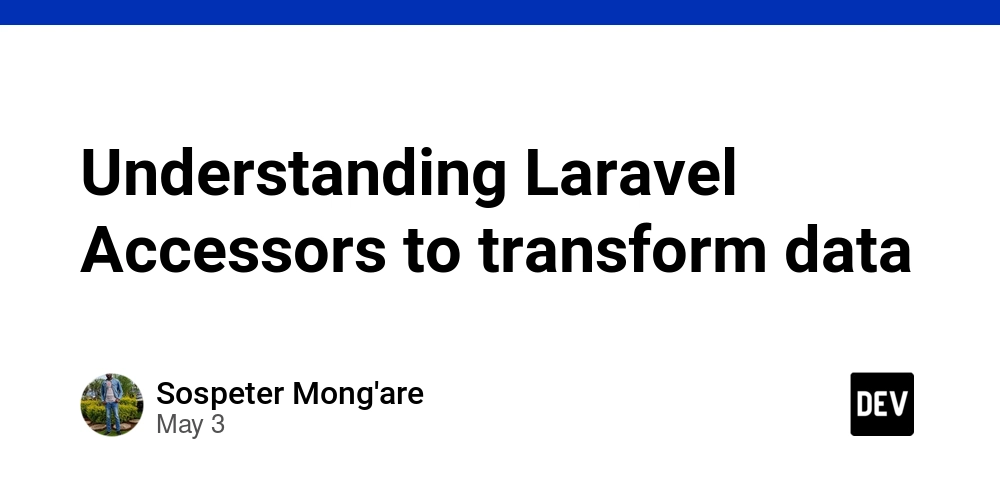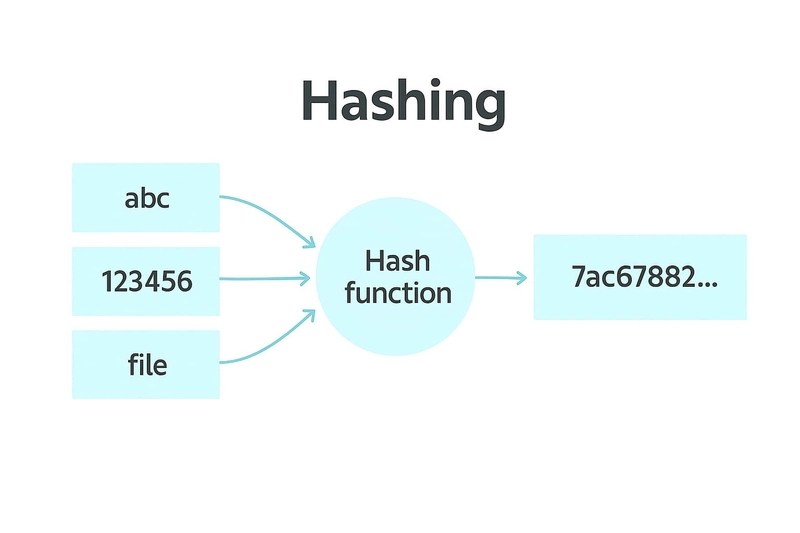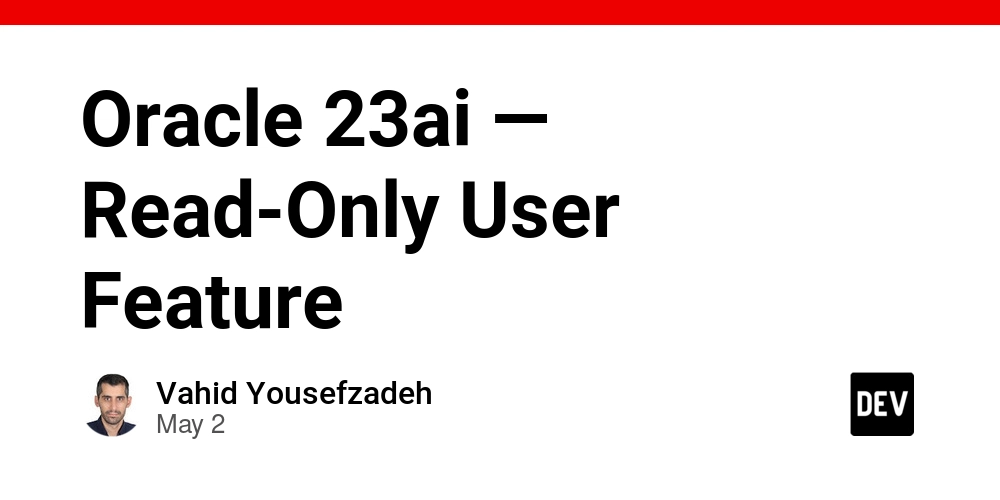Understanding Laravel Accessors to transform data
When working with Laravel Eloquent models, you often need to modify or compute attribute values before using them in your application. This is where accessors come into play—they allow you to manipulate data seamlessly when retrieving it from the database. In this article, we’ll explore: What accessors are and why they’re useful How to define and use them Practical examples (including checking for subtasks) Best practices and when to avoid them What Are Accessors in Laravel? An accessor is a method in an Eloquent model that lets you modify an attribute’s value when accessing it. Instead of manually formatting or computing values every time, you define the logic once in the model, and Laravel automatically applies it. Why Use Accessors? Consistent Data Formatting Ensure dates, names, and other fields are always displayed in a uniform way. Compute Dynamic Attributes Derive new attributes (e.g., full_name, has_subtasks) without storing them in the database. Improve Readability Keep transformation logic inside models rather than scattering it across controllers or views. Automatic JSON Inclusion Append computed attributes to API responses effortlessly. How to Define an Accessor Accessors follow a naming convention: get{AttributeName}Attribute() Example 1: Formatting a Date Suppose you store dates in the database as YYYY-MM-DD but want to display them as DD/MM/YYYY: // In your Model (e.g., User.php) use Carbon\Carbon; public function getBirthdayAttribute($value) { return Carbon::parse($value)->format('d/m/Y'); } Now, whenever you access $user->birthday, it returns the formatted date. Example 2: Combining First & Last Name (Full Name) Instead of concatenating names repeatedly in your code, define an accessor: public function getFullNameAttribute() { return "{$this->first_name} {$this->last_name}"; } Now, $user->full_name gives the combined name. Example 3: Checking if a Task Has Subtasks In a task management system, you might want to know if a task has subtasks without loading them all. An accessor can efficiently check this: // In Task.php public function getHasSubtasksAttribute() { return $this->subtasks()->exists(); // Returns true/false } // Append to JSON responses protected $appends = ['has_subtasks']; Now, every Task JSON response includes: { "id": 1, "title": "Complete project", "has_subtasks": true } Including Accessors in JSON Responses By default, accessors are available on the model instance but not automatically included in JSON. To include them, add the attribute to $appends: protected $appends = ['full_name', 'has_subtasks']; When Should You Use Accessors? ✔ Formatting data (dates, currencies, text transformations). ✔ Deriving computed fields (e.g., age from birthdate). ✔ Checking relationships (e.g., has_comments, is_published). ✔ Masking sensitive data (e.g., hiding part of an email). When Should You Avoid Accessors? ❌ Heavy computations (can slow down queries; consider caching). ❌ Complex database queries (use query scopes instead). ❌ Overusing them (don’t add unnecessary logic to models). Conclusion Accessors are a powerful Laravel feature that helps keep your data transformation logic clean and reusable. Whether you’re formatting dates, computing dynamic attributes, or checking relationships, accessors streamline your workflow while maintaining consistency. Key Takeaways Define accessors using get{Attribute}Attribute(). Use $appends to include them in JSON responses. Great for formatting, combining fields, and checking relationships. Avoid overusing them for performance-heavy operations. By leveraging accessors, you can write cleaner, more maintainable Laravel applications.

When working with Laravel Eloquent models, you often need to modify or compute attribute values before using them in your application. This is where accessors come into play—they allow you to manipulate data seamlessly when retrieving it from the database.
In this article, we’ll explore:
- What accessors are and why they’re useful
- How to define and use them
- Practical examples (including checking for subtasks)
- Best practices and when to avoid them
What Are Accessors in Laravel?
An accessor is a method in an Eloquent model that lets you modify an attribute’s value when accessing it. Instead of manually formatting or computing values every time, you define the logic once in the model, and Laravel automatically applies it.
Why Use Accessors?
-
Consistent Data Formatting
- Ensure dates, names, and other fields are always displayed in a uniform way.
-
Compute Dynamic Attributes
- Derive new attributes (e.g.,
full_name,has_subtasks) without storing them in the database.
- Derive new attributes (e.g.,
-
Improve Readability
- Keep transformation logic inside models rather than scattering it across controllers or views.
-
Automatic JSON Inclusion
- Append computed attributes to API responses effortlessly.
How to Define an Accessor
Accessors follow a naming convention:
get{AttributeName}Attribute()
Example 1: Formatting a Date
Suppose you store dates in the database as YYYY-MM-DD but want to display them as DD/MM/YYYY:
// In your Model (e.g., User.php)
use Carbon\Carbon;
public function getBirthdayAttribute($value)
{
return Carbon::parse($value)->format('d/m/Y');
}
Now, whenever you access $user->birthday, it returns the formatted date.
Example 2: Combining First & Last Name (Full Name)
Instead of concatenating names repeatedly in your code, define an accessor:
public function getFullNameAttribute()
{
return "{$this->first_name} {$this->last_name}";
}
Now, $user->full_name gives the combined name.
Example 3: Checking if a Task Has Subtasks
In a task management system, you might want to know if a task has subtasks without loading them all. An accessor can efficiently check this:
// In Task.php
public function getHasSubtasksAttribute()
{
return $this->subtasks()->exists(); // Returns true/false
}
// Append to JSON responses
protected $appends = ['has_subtasks'];
Now, every Task JSON response includes:
{
"id": 1,
"title": "Complete project",
"has_subtasks": true
}
Including Accessors in JSON Responses
By default, accessors are available on the model instance but not automatically included in JSON. To include them, add the attribute to $appends:
protected $appends = ['full_name', 'has_subtasks'];
When Should You Use Accessors?
✔ Formatting data (dates, currencies, text transformations).
✔ Deriving computed fields (e.g., age from birthdate).
✔ Checking relationships (e.g., has_comments, is_published).
✔ Masking sensitive data (e.g., hiding part of an email).
When Should You Avoid Accessors?
❌ Heavy computations (can slow down queries; consider caching).
❌ Complex database queries (use query scopes instead).
❌ Overusing them (don’t add unnecessary logic to models).
Conclusion
Accessors are a powerful Laravel feature that helps keep your data transformation logic clean and reusable. Whether you’re formatting dates, computing dynamic attributes, or checking relationships, accessors streamline your workflow while maintaining consistency.
Key Takeaways
- Define accessors using
get{Attribute}Attribute(). - Use
$appendsto include them in JSON responses. - Great for formatting, combining fields, and checking relationships.
- Avoid overusing them for performance-heavy operations.
By leveraging accessors, you can write cleaner, more maintainable Laravel applications.










































































